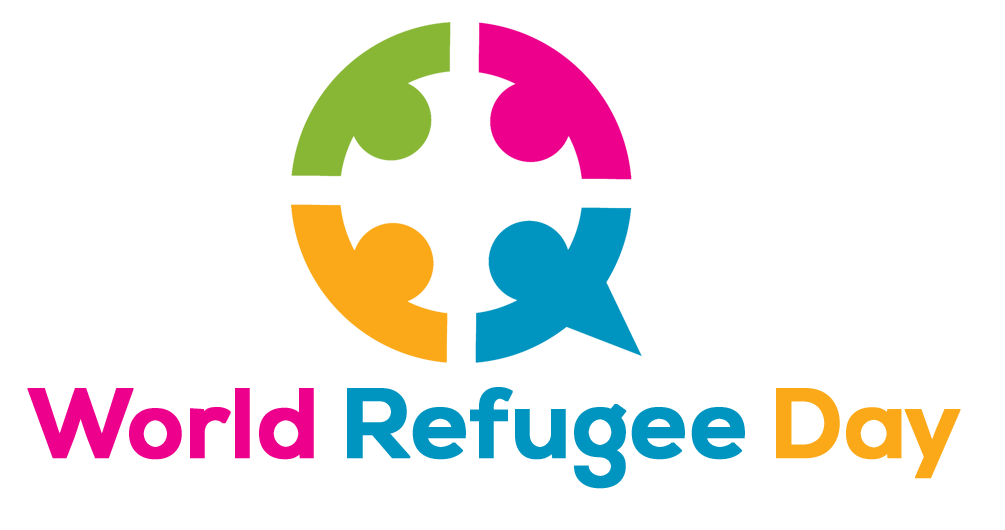June 20, is World Refugee Day.

It’s a day that the United Nations created to celebrate the resilience and courage of refugees and their contributions to society.
The UN defines a refugee as “someone who has been forced to flee his or her country because of persecution, war, or violence.” As of May, an estimated 25.4 million refugees around the globe have fled their homes to escape violence and persecution.
World Refugee Day was first celebrated in 2001 to mark the 50th anniversary of the 1951 Refugee Convention, when the refugee population was an estimated 12 million. Since then, the number of refugees has more than doubled, according to a UN High Commissioner for Refugees (UNHCR) report.
But while various conflicts, like the ongoing war in Syria or the economic crisis in Venezuela,
continue to force people to seek refuge in safer parts of the world,
some of the world’s wealthiest countries, like the US, Italy, and
Germany, are initiating plans to shut down their borders. This has left
much of the responsibility to take in refugees in the hands of less
wealthy countries like Turkey and Pakistan, which have accepted the vast
majority of displaced people in the past several years.
In short, this is a living, ongoing crisis — and it’s not going anytime soon. Here are three things we’ve learned since last year’s World Refugee Day.
1) The number of displaced people in the world has never been higher
By the end of last year, according to a recent UNHCR report,
there were 68.5 million forcibly displaced people in the world,
including 25.4 million refugees. The number also includes about 40
million internally displaced people — people who were forced to leave
their homes but are still in their home countries — and 3.1 million
asylum seekers, or people who have applied for refugee status but are
waiting for approval.
2017 was the sixth consecutive year
that the number of forcibly displaced people in the world surpassed
peak World War II levels, and this year’s reports indicate that that
number is probably going to keep going up.
The majority of refugees right now are from Syria, where 6.3 million people
have fled their country to escape the ongoing conflict there. European
countries have also taken in asylum seekers from several other
countries, like Iraq and Afghanistan.
2) Venezuela saw a mass exodus of people over the past year
This year, Latin America saw a huge spike in the number of refugees pouring out of Venezuela. The country’s faltering economy and political turmoil has left its citizens unable to sustain themselves, forcing them to flee their homes in search of a better life. Venezuelans have left for many reasons, including threats from armed groups and shortages of food and medicine.
A 2018 UN report
estimated that 5,000 Venezuelans were leaving their homes every day and
around 1.5 million people are displaced in the region. Nearly 3 million citizens
have escaped the country in the past two decades. Venezuelans are
subject to “exploitation, abuse, manipulation, and a wide range of other
protection risks including racism, discrimination and xenophobia,”
according to the report.
These Venezuelans have spilled into bordering countries like Colombia. But in February, Colombian President Juan Manuel Santos tightened border controls and stopped issuing new migratory cards in an effort to restrict Venezuelan access to the country.
Venezuelans have also fled to Brazil, which declared a state of emergency in February over the massive influx of refugees.
And the economic situation in Venezuela doesn’t seem like it’s getting any better.
In May, Venezuelan President Nicolás Maduro — who presided over the
country during its massive economic collapse and refused to enact
reforms — was reelected for another six years.
3) Many wealthy countries are under pressure to shut down their borders
According to the UNCHR, an enormous percentage of displaced people are being hosted in developing countries, while wealthier nations like the US and Italy have made it much more difficult for refugees to get in.
Last September, Trump dropped the refugee cap,
which is the maximum number of refugees the US will admit per year, to
just 45,000 people, the lowest number in years. And even though Syrians
are the largest group of people fleeing conflict right now, from January
to April of this year, the US reportedly only accepted 11 Syrian refugees.
This has forced low- and middle-income countries like Turkey, Uganda, and Pakistan to take in the majority of the world’s refugees. Uganda, which is classified as a low-income country by the World Bank, has taken in 1.4 million refugees. Out of the countries classified as high-income, Germany hosts the most refugees and asylum seekers, with 669,500 people total.
That’s mainly because in 2015, Germany’s Chancellor Angela Merkel enacted an “open-door” policy,
allowing more than 1.4 million migrants to flow into the country. But
now Germany is having issues integrating the large number of refugees
into its society, and Merkel is facing backlash from conservative
leaders who want to turn away some asylum seekers.
Combined, all this indicates that there’s a growing
attitude in wealthier countries around the world that finding a home for
refugees, quite frankly, is not their problem. But with fewer countries
willing to host people fleeing conflict it’s unclear where the growing
number of refugees will be able to call home.

No comments:
Post a Comment